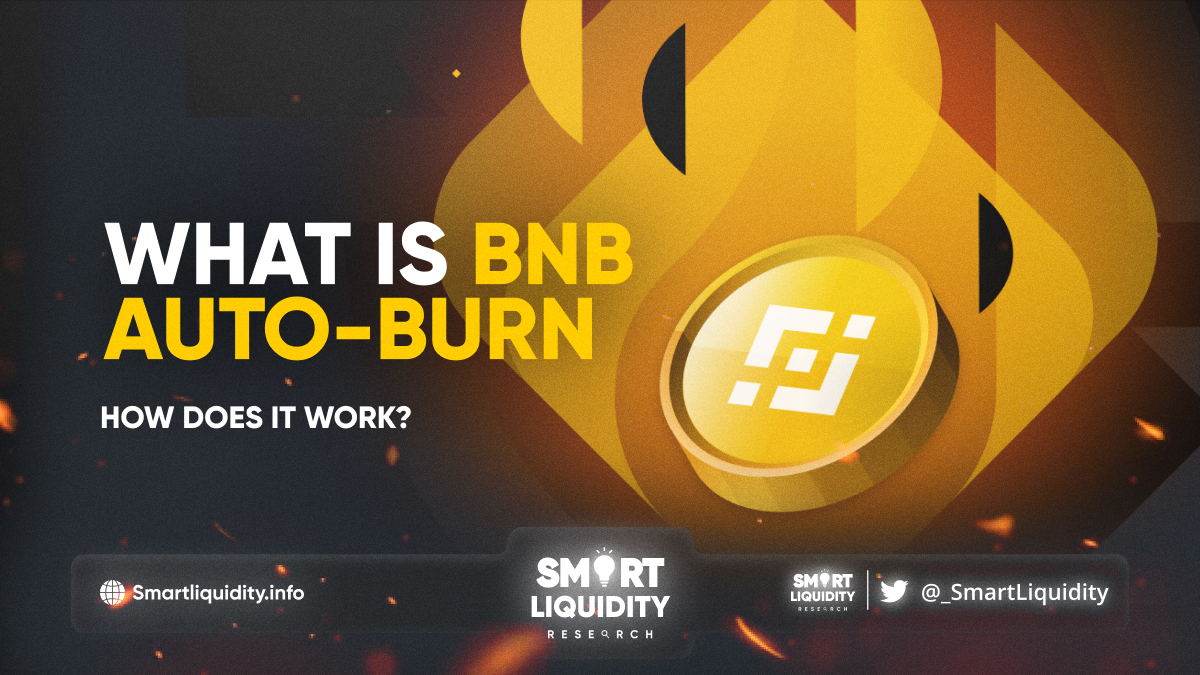What Is BNB Auto-Burn And How Does It Work?


The Binance Coin is the native cryptocurrency of the Binance platform. When BNB was first introduced in 2017, it was introduced as an ERC-20 token on the Ethereum network with a total quantity of 200 million. Tokens on Binance’s exchange, BNB, were moved to the BNB Chain mainnet in 2019. Binance’s native token, Binance Coin, has become a vital commodity within the Binance economy. Binance and Binance.US rely on it to run their exchanges, as well as additional applications developed on the BNB Chain.
What Is a Coin Burn?
To diminish the available supply of a cryptocurrency, some of it may be “burned,” or removed permanently from circulation. In other terms, coins are burned and can no longer be utilized for selling or anything else. Coin burning is an attempt to generate a deflationary impact and improve the value of a cryptocurrency for its holders by decreasing its supply. Coin-burning events are being held in BNB to lower the overall supply to below 100 million BNB.
Although there are various methods for destroying cryptocurrency, some protocols include a dedicated burning mechanism. For example, BNB includes a smart contract burning capability when it was initially launched. Coin burning is becoming increasingly commonplace on the blockchain as Decentralized Financial (DeFi) protocols gain popularity. Ethereum started burning the ETH flat fee for all blockchain transactions after deploying the London hard fork upgrade in 2021.
To burn money, a fixed amount of cryptocurrency is given to a wallet address or smart contract that cannot be utilized for conducting transactions and doesn’t have any private keys. The coins, once sent to the specified destination, will be irretrievably lost.
What is BNB Auto-Burn?
Demand and supply are major factors in establishing the token’s price. Token supply can be managed with greater ease than token demand. The quantity of BNB tokens may be kept within a reasonable range thanks to the token’s built-in “Auto-burn” technology. The term “coin burning” refers to the practice of physically destroying coins or tokens to reduce the total amount in circulation. To burn coins, they must be sent to a wallet address that can only receive coins and not make any other transactions.
The coins transferred to this address are locked in place and cannot be withdrawn. The goal of this procedure is to cause the coin’s value to rise as its supply diminishes. In the past, BNB has used two distinct coin-burning mechanisms, including a quarterly BNB burning activity and a burning mechanism implemented in BEP-95 that burns a percentage of BNB used to pay for gas on the Binance Smart Chain (BSC).
The new BNB Auto-burn process will begin adjusting the burn amount in December 2021 based on the price of BNB and the supply and demand for the cryptocurrency. With the help of on-chain data from BSC, this auto-burn can determine the precise amount of BNB that needs to be burned, making transactions more transparent and predictable.
How Is BNB Burned?
The BNB token (BNB) is the ecosystem’s utility token. There were originally 200,000,000 BNB created, but this number is being reduced through a process called “coin burning.” The burnings will continue until the stockpile is depleted by half, or until less than 100,000,000 BNB remains.
There are 2 techniques to burn BNB. First, there are BNB burning parties every three months. The second method, first used in BEP-95, involves destroying some of the BNB used to pay for gas on the BNB Chain.
Before, the quarterly burning of BNB was tied to the volume of BNB transactions on the Binance platform. In contrast, Binance introduced BNB Auto-Burn in December 2021. Depending on the quarterly BNB price and the total number of blocks mined on the BNB Chain, the BNB Auto-Burn mechanism will automatically change the total quantity of BNB to be burned. The BNB community benefits from the increased clarity and certainty that this provides.
🔸Real-time burning mechanism (BEP-95)
As a first option, there is the Binance Evolution Proposal (BEP)-95 flame mechanism. Through BEP-95, a fraction of the gas costs associated with BSC are immediately burned, so destroying BNB. BEP-95 has maintained its daily burn rate of 860 BNB after the 2021 BNB Smart Chain upgrade.
Because the burn rate for BNB was lower than expected, Binance CEO Changpeng Zhao introduced BEP-95. The BEP-95 protocol guarantees a steady supply of BNB for incinerators by having them spend a portion of the gas taxes collected by validators from each block. Because BEP-95 cannot function without the BSC network, it will keep burning BNB even after the target of 100 million has been attained.
A real-time burning mechanism for the BNB Chain is proposed in Binance Evolution Proposal BEP-95. A percentage of the gas costs received by validators from every block is burned automatically by the smart contract. The more individuals who utilize the BNB Chain, the faster the BNB will be burnt.
You may follow the BNB Chain’s daily 285 BNB burn rate on Twitter as of July 2022. Since BEP-95 relies entirely on the BNB Chain infrastructure, it will keep burning BNB even though the 100 million burn goal has been met.
🔸Quarterly auto-burn
As for the second, quarterly burns are something Binance does on the dot. At these burns, a certain quantity of BNB is repurchased from the market and then destroyed. It all started in October of 2017 with a burn that consumed 986,000 BNB.
Using the company’s quarterly income, the burns are publicized in advance. The quantity of BNB to be burnt depends on a variety of criteria, including quarterly block production rates, BNB supply in circulation, and overall profitability.
Conclusion
BNB, a utility coin, has seen significant development since its 2017 debut. The BNB ecosystem, like the blockchain industry as a whole, is seeing rapid expansion. With the new BNB Auto-Burn, the deflationary features of BNBs are enhanced, and the community benefits from more openness.




